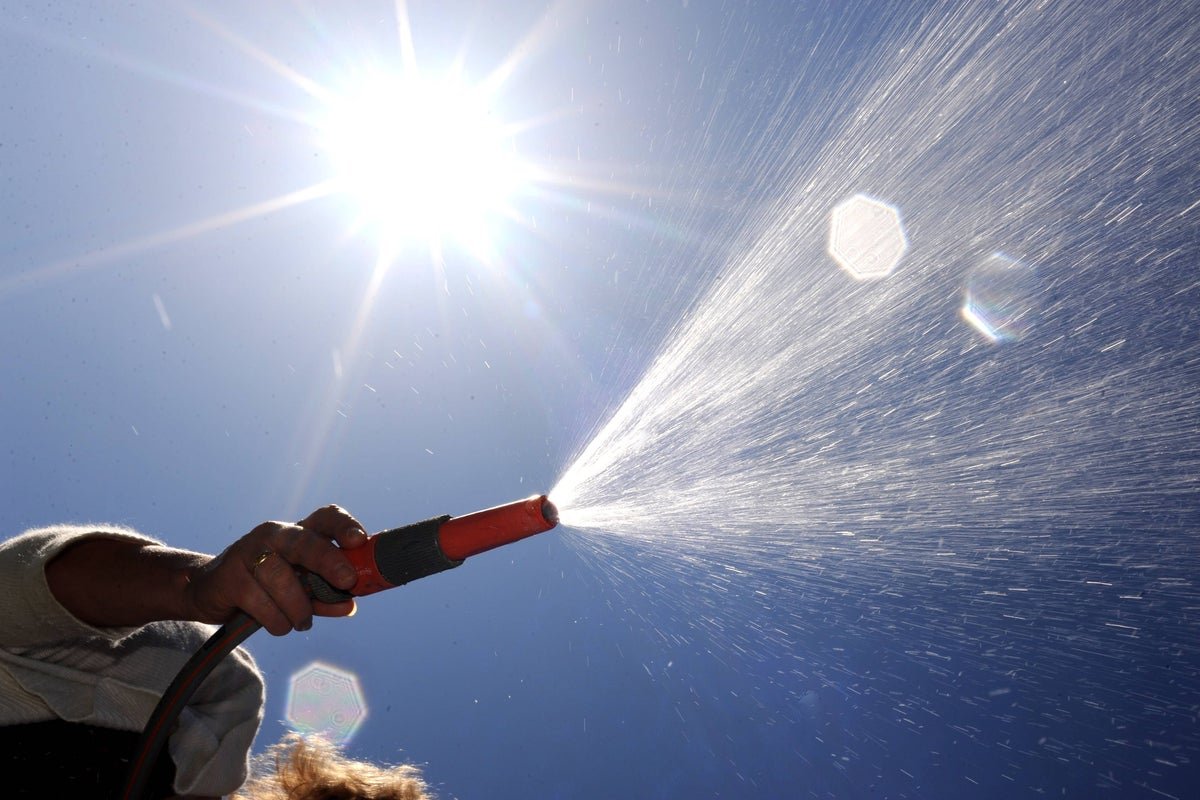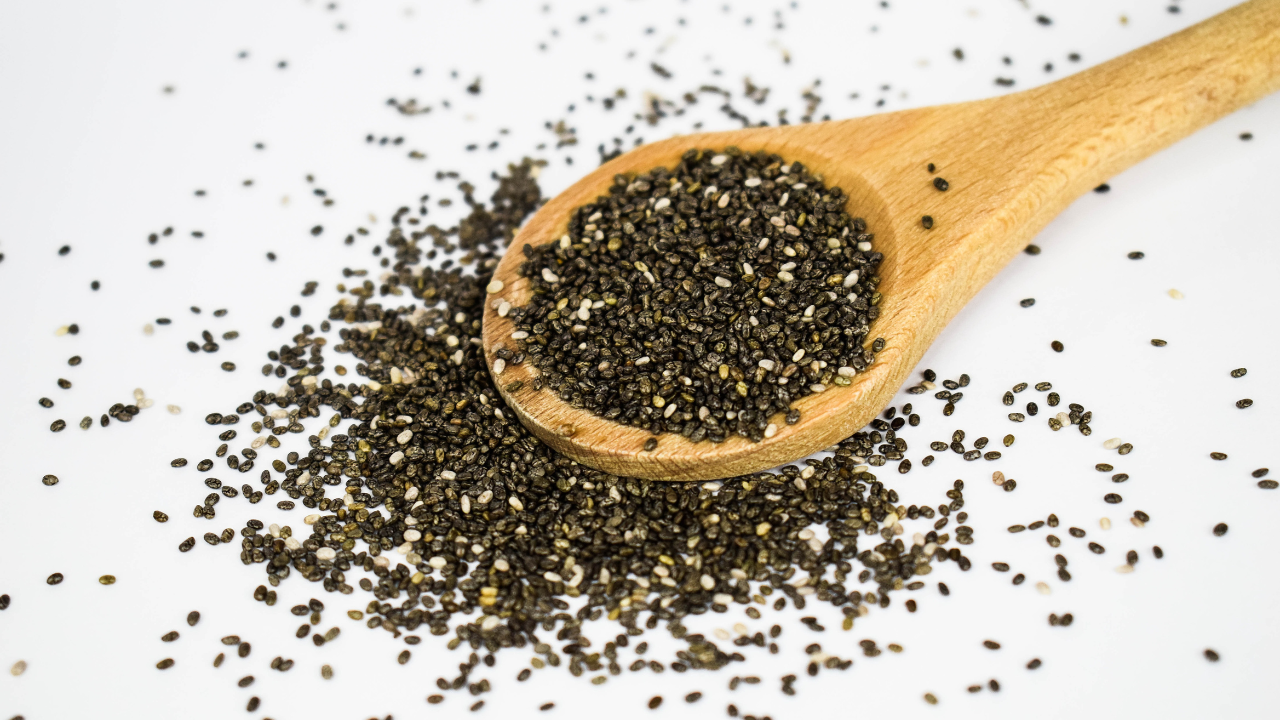As the heatwave gets underway, how can gardeners minimise the damage caused by scorching temperatures?
“It’s about risk management,” says Nick Turrell, RHS horticultural advisor. “No-one’s going to suddenly change all their plants, getting plants with silver leaves etc.
“Some plants are more susceptible than others, and I would say the top five are hydrangea, which likes slightly cooler temperatures and plenty of water, Japanese maples, which have thin leaves and lose moisture, fuchsia, astilbes and roses, which are hungry and thirsty. They catch gardeners out.”
Plants likely to cope better include lavender, rosemary, sedum and other succulents, he says.
But what else can we do?
1. Water wisely
“Water in the morning because that’s when the plants are going to be needing it during the day,” Turrell advises.
“Don’t spray the leaves or water on the top of the leaves, get it underneath to the roots and use a watering can, not a hose, because if you’ve a hose, you’re more likely to liberally spray it around, which means you get a sprinkling on the surface which just evaporates. Get the nozzle of the watering can right in at the roots.”
Melissa Quinney at Cabin Master, advises: “During hosepipe bans or dry spells, greywater (from baths or washing up, provided it’s free from harsh chemicals) can be reused to water ornamental plants.”
“It’s best to water less frequently but more thoroughly, soaking the rootball properly,” suggests Charles Carr, head of wholesale nurseries at Hillier Nurseries and Garden Centres.
Water plants in the area where the roots are, suggests Nick Hamilton, son of the late Gardeners’ World icon Geoff Hamilton and owner of Barnsdale Gardens in Rutland.
“Some plants will require more than others, so when considering whether a plant needs water then my view is that if you’re not sure, don’t water. Don’t worry if a plant begins to wilt from under-watering, because if you then apply water, within an hour or so you would never know it was wilting.”
Give watering priority to anything which has been planted within the last 12 months, and particularly newly planted trees, Turrell adds.
2. Mulch the surface
“To lock in moisture and protect plants during a hot spell, cover the top of container plants with a mulch such as gravel, bark or a good quality compost. You should also mulch garden beds to help bedding plants retain moisture and give them a nutrient boost,” suggests Dobbies’ plant buyer, Nigel Lawton.
“Add organic mulch such as wood chippings, garden compost or leaf mould to beds to save water and improve moisture retention. A thick layer of mulch will block sunlight, insulating the soil and reducing the amount of water evaporating from the garden,” Carr adds.
“I think a good shredder is a very worthwhile investment as old flower stems, twigs and vegetable material, such as brassica stems, can be shredded down, composted and used as an excellent mulch,” suggests Hamilton.
3. Don’t buy new plants
If the hot weather is forecast for a few weeks, there’s no point planting new plants because you’ll just be putting stress on them and on the watering system, Turrell advises.
“Anything that has been established for more than two years should be OK because it already has its roots down deep enough to cope with unusual circumstances.
“But the plants will tell you if they need a drink, when they start wilting or the leaves start to curl up around the edges,” he explains.
4. Take hanging baskets down
The compost in hanging baskets can evaporate so quickly that it’s best to take them down during a heatwave and put them in the shade where they won’t lose water so rapidly, says Turrell.
5. Pick vegetables which are likely to bolt
Lettuces are prone to running to seed in hot weather, so pick them young and keep them in the fridge, or shade them with netting to keep the heat of the sun at bay, says Turrell.
6. Find shade
“For those especially vulnerable during extreme heat, temporary shade structures using old bedsheets, garden furniture, or shade cloths can make all the difference,” says Quinney.
7. Huddle patio pots
Put patio pots in the shade together to create a microclimate and reduce evaporation, says Turrell.
8. Look after wildlife
Make sure birdbaths are topped up because they will need it for drinking and bathing, and put some pebbles in water-filled pot saucers to allow insects to land and drink as well.
9. Leave your grass
The grass may look like a mass of straw but it will recover when the autumn rain comes, so if you can stand it looking brown, just leave it, says Turrell. However, if it has been newly laid and hasn’t yet been through a winter, you’ll need to water it.
“In hot spells, it’s best to hold off on applying weedkillers or fertilisers. These can be too harsh when the lawn is already under stress and may cause more harm than good,” says Peter Chaloner, managing director of garden machinery specialists Cobra.
“When grass turns yellow and brittle, it’s a sign it’s conserving energy due to lack of water. At this point, try to keep foot traffic to a minimum and clear away furniture or toys so the lawn has the best chance to recover undisturbed.”
10. Plant drought-tolerant species
If you have spaces you feel you must fill, plug the gap with drought-tolerant species such as lavender, rosemary, salvia and sedum – but remember they will also need watering until they become established.
“Generally, succulents and silver foliage plants like lavender are the best at adapting to warmer conditions, so these are fine to be left as they are, but you should make a point to check up on your other plants throughout the summer months and adjust watering as needed,” says Lawton.
11. Improve your soil
“An excellent way to improve a light soil and increase its moisture retention capabilities is to add organic matter, which could be your own garden compost, green composts or well-rotted farmyard manure. Any one of these can be lightly forked into the surface and then added to the surface as a thickish layer to act as a mulch,” Hamilton advises.
“If you look after your soil, pretty much everything else falls into place,” says Turrell. “If every year you mulch that soil with as much organic matter as you can, you are helping to prepare for any eventuality.”
12. Use a water butt
This is another vital investment, says Hamilton, and can be fitted to trap and hold much needed rainwater – when it does finally come – from all your downpipes.
“I would also consider using the low-pressure leaking pipe that will work from a water butt. When buried just under the soil surface and laid out around the plants that require a bit more moisture, water will just gradually leak out and because it is under the soil, evaporation will be minimal.”
#manage #garden #heatwave



